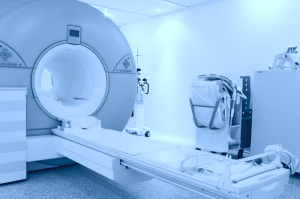by
Christina Hwang, Contributing Reporter | May 02, 2016

Left atrium and superior
vena cava affected most
Treating patients of early non-small cell lung cancer with stereotactic body radiation therapy (SBRT) is associated with a slightly increased risk of death from causes other than cancer, researchers from the Netherlands Cancer Institute have discovered.
Dr. Barbara Stam and her team analyzed data from 565 patients diagnosed with early non-small cell lung cancer who were treated with SBRT, and created a “template” image of the heart and its substructures. They mapped the anatomy of each of the patients in a process called deformable image registration.
“All inoperable patients with early stage lung cancer receive SBRT and the patients I analyzed are all the patients within our consortium that have only one tumor and for whom I had the scans available,” Dr. Stam told HCB News.



Ad Statistics
Times Displayed: 50459
Times Visited: 1437 Ampronix, a Top Master Distributor for Sony Medical, provides Sales, Service & Exchanges for Sony Surgical Displays, Printers, & More. Rely on Us for Expert Support Tailored to Your Needs. Email info@ampronix.com or Call 949-273-8000 for Premier Pricing.
Information on the radiation doses for the patients was added to the template, allowing the researchers to figure out dose parameters such as minimum, average and maximum doses for different parts of the heart.
Finding if there is a relation between dose, substructures and non-cancer death is only relevant if the relation still exists when other factors that are known to be related to non-cancer death are taken into account, according to Dr. Stam. Therefore, a second statistical analysis was performed that included age, lung function and performance status.
After an average follow-up of 28 months, 58 percent of the patients were still alive and the team found that two substructures had the strongest association with non-cancer death, the maximum dose on the left atrium and the dose to the small area of the superior vena cava, the vein that carries deoxygenated blood from the head, arms and upper body to the heart.
In the left atrium, for every 1 Gray (Gy), a derived unit of ionizing radiation dose, above the average dose of 7.9 Gy, the risk increased by 1.5 percent; and for other structures, the risk increased by one to two percent.
The team acknowledges that they are not sure what caused the non-cancer deaths, since the patients were already elderly, with an average age of 73, and usually passed away at home with no autopsy having been performed. However, the deaths may be heart-related since research in breast cancer patients show that radiotherapy can affect the heart adversely.
These findings were presented at ESTRO 35, and Philip Poortmans, President of ESTRO, who was not involved in the study, said in a statement, “This study confirms that we should take the dose to organs at risk into consideration, not only for malignant lymphoma and breast cancer patients, but also for lung cancer patients when cure is an option.”
To both validate and continue on with the study, the researchers plan to investigate ways to deliver radiotherapy while sparing heart structures as much as possible.

